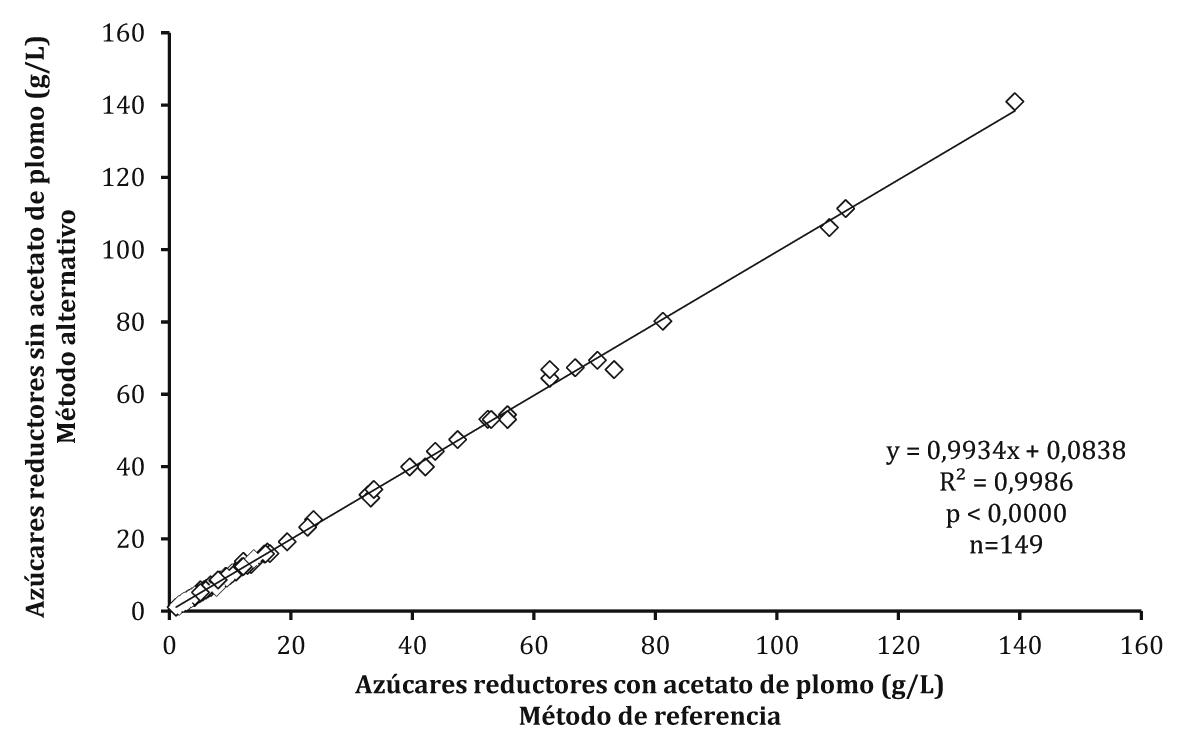Is it possible measure reducing sugar in wines by Fehling Causse Bonnans method, without using neutral lead acetate?
Keywords:
analytical techniques, wine, Fehling CausseBonnans, reducing sugars, leadAbstract
The Argentine official method to determine the content of reducing sugars in musts and wines is the Causse Bonnans Fehling method. This method requires a sampletreatment to obtain a decolorized and clear solution. Activated charcoal and lead acetate are used for this procedure. The effects of lead poisoning in humans, animals and the environment are known, so it is necessary to minimize their use to achieve sustainable production. Reducing sugars were analyzed in 149 wines and 67 grape musts. For each sample, two different treatments were used: a) 5 mL of lead acetate at 25% and 0.5 g of activated charcoal and b) adding 5 mL of distilled water and 0.5 g of activated carbon. The data were processed by performing simple linear regression analysis. Lead acetate can be eliminated in the pretreatment of must and wine samples to determine reducing sugars by Fehling Bonnans Causse method. This modification of the original technique eliminates the use of lead salts and pollution involved, without faults in the measurement of the reducing sugars.

Downloads
Published
Issue
Section
License
Aquellos autores/as que tengan publicaciones con esta revista, aceptan las Políticas Editoriales.


